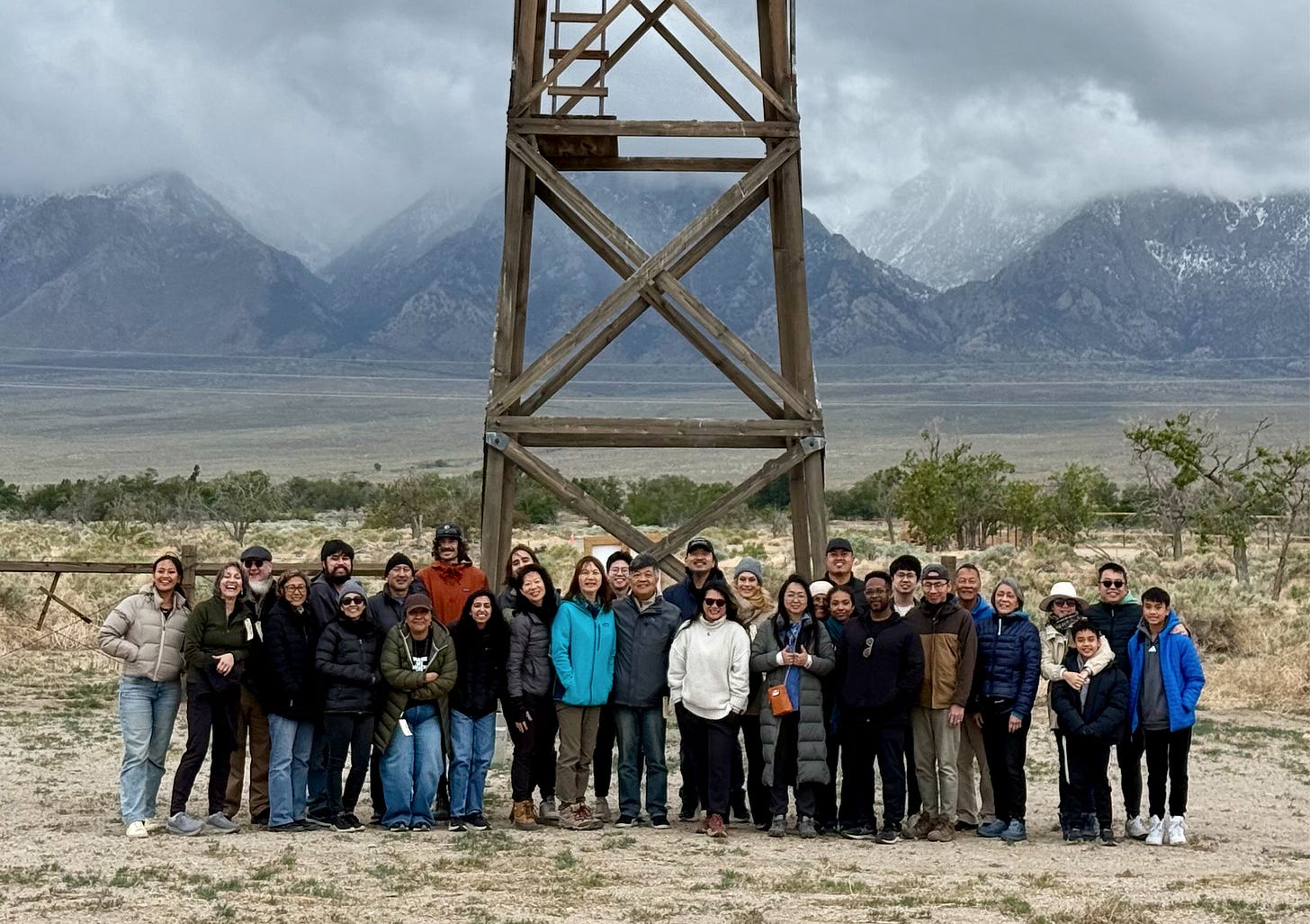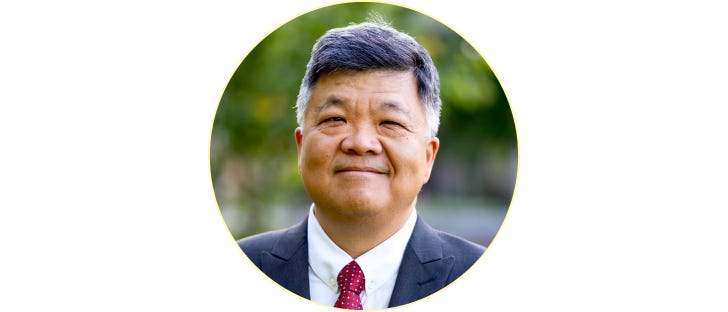Reflections from the Manzanar Pilgrimage
Remembering Injustice, Renewing Faith, and Responding to the Call for Justice
Lord, may we depart from this sacred site not merely haunted by the grave injustices of the past, but also hungry - very hungry – for your righteousness to fill our land today.
On April 26, 2025, over 120 individuals participated in the Manzanar Pilgrimage, sponsored by Fuller Theological Seminary’s Asian American Center (AAC) and Evergreen Baptist Church of Los Angeles. Despite the blustery and cold weather, the group joined more than 2,500 attendees at the Manzanar National Historic Site for the 56th Annual Pilgrimage organized by the Manzanar Committee.
What happened at Manzanar?
Manzanar was one of the sites where 125,000 Japanese Americans were unconstitutionally incarcerated during WWII. Following the bombing of Pearl Harbor, President Franklin D. Roosevelt invoked the Alien Enemy Act of 1798, leading to the forced removal and incarceration of Japanese Americans in 10 camps across California, Oregon, Washington, and parts of Arizona. Families had just one week to prepare, taking only what they could carry, losing homes, possessions, businesses, and farms. While many were released to complete their college education or serve in the war effort, a significant number were detained until the end of the war. The pain and trauma of that experience stirred up at least three generations of Japanese Americans (including Christians and Buddhists) and others to participate in pilgrimages to this sacred site. The incarceration camps also inspired the Asian American movement for civil rights and solidarity with the marginalized.









At the event (1) visitors gathered next to the large white monument that marked the cemetery site. The speakers emphasized the importance of defending Truth, Justice, and Democracy. They called for the repeal of repressive laws like the Alien Enemy Act of 1798 and the McCarran Walter Act of 1952, highlighting the need to confront and repair past injustices. Calls for reparations were made for Black communities, land and treaty rights for Indigenous people, humane immigration laws, and an end to genocidal violence in Gaza. The Manzanar Committee concluded the commemoration with an Interfaith service.
We also held our own worship service at the Protestant Church site. The pilgrimage concluded with a collective reflection on addressing grave injustices and a prayer for righteousness. Participants remarked on the similarities between the U.S. government’s actions during World War II and today’s administration’s efforts to deport and detain legal immigrants. One observed “How strong and destructive fear is” and was “left reeling on why humans continue to put other people in boats, busses, trains--and disrupting and/or eradicating lives.” Another participated noted that the important lessons from the Manzanar Pilgrimage was “not letting something like this happen ever again…not being silent.”
Our contingent marveled at the resilience of the incarcerated and noted the important role that Christianity and Buddhism played in offering solace and hope. We returned more aware of the relevance of this traumatic history for our times today and wondered why more people don't know that this occurred?
AACHI is exploring the possibility of organizing more pilgrimages to Manzanar and other sacred historic AANHPI sites. (2)
Rev. Dr. Tim Tseng is Director of the Asian American Christian History Institute (AACHI) and Research Professor at Fuller Theological Seminary. A longtime advocate for telling the stories of Asian American Christians, he’s served in seminaries, churches, and academic spaces coast to coast. Tim lives in Castro Valley with his wife Betty, is a proud dad to Nathaniel and Benjamin, and still roots for New York sports teams—despite living in the Bay Area since 2000.
Manzanar Committee: Dedicated to educating and raising public awareness about the incarceration and violation of civil rights of persons of Japanese ancestry during World War II, and to the continuing struggle of all peoples when Constitutional rights are in danger.
Special thanks to the 2025 Manzanar Pilgrimage Planning Team: Tim Tseng (AACHI); Keven Doi, Gillian Garica, and Krystin Bruan (Fuller AAC); Jason Ashimoto (Evergreen Baptist Church of LA); Bill Watanabe (Little Tokyo Historical Society). We also appreciate the financial support of the American Baptist Home Missions Society and Fuller Student Engagement Subsidy.









Thanks for attending the pilgrimage and sharing your reflections. It is such very important to remember this history and share with as many people as possible so that we don’t forget and can work together to ensure this does not happen again.
However, the main camps were spread across more states than you’ve mentioned. These 10 camps are:
* Poston (Arizona)
* Gila River (Arizona)
* Jerome (Arkansas)
* Rohwer (Arkansas)
* Manzanar (California)
* Tule Lake (California)
* Amache (Colorado)
* Minidoka (Idaho)
* Topaz (Utah)
* Heart Mountain (Wyoming)
A great website to find information on the Japanese incarceration is densho.org. In addition, to the 10 camps mentioned, there were a number of other detention centers across the country used to incarcerate not only other Japanese but also German and Italians. This page has a map with these facilities.
https://maps.densho.org/sitesofshame